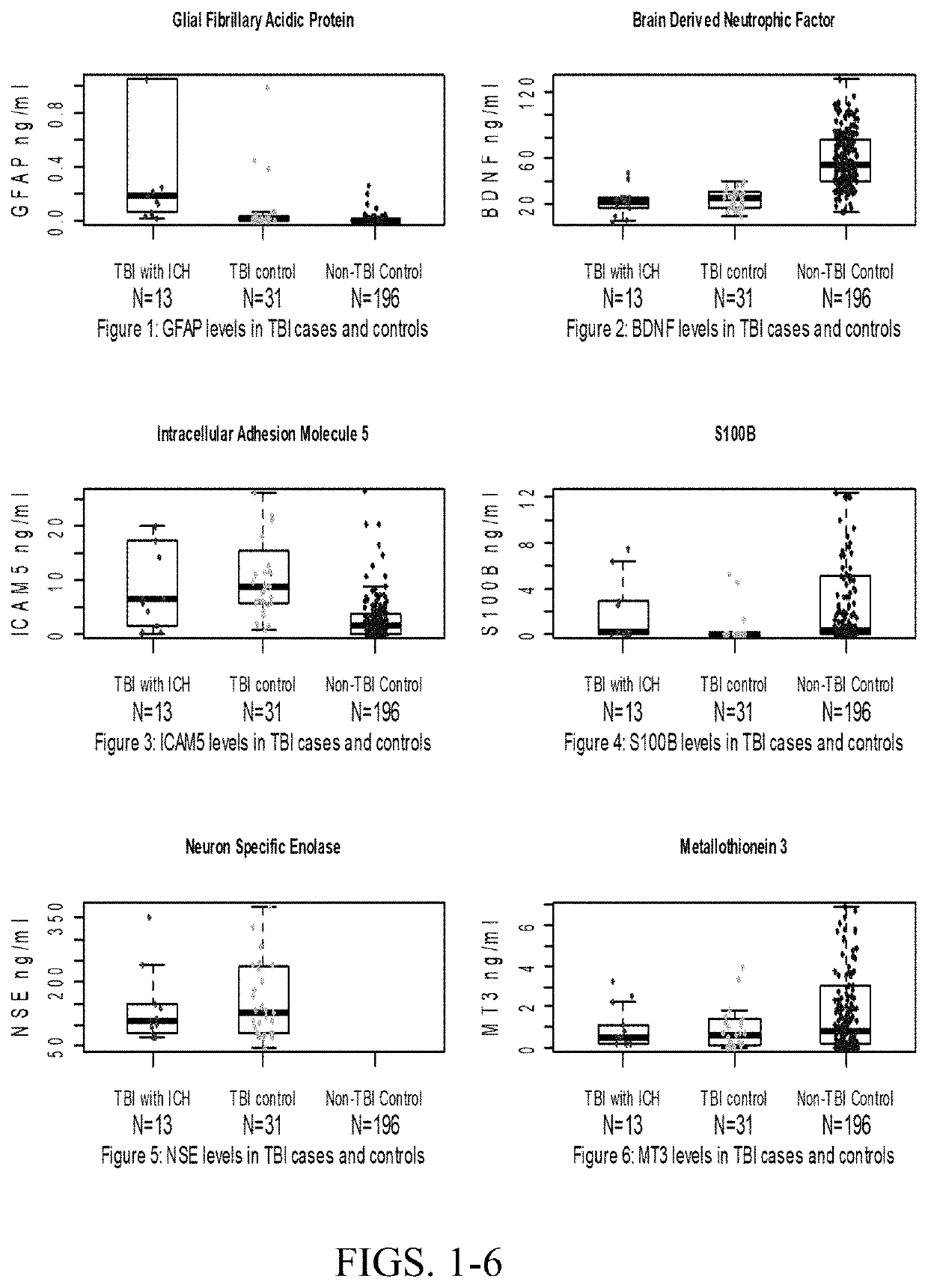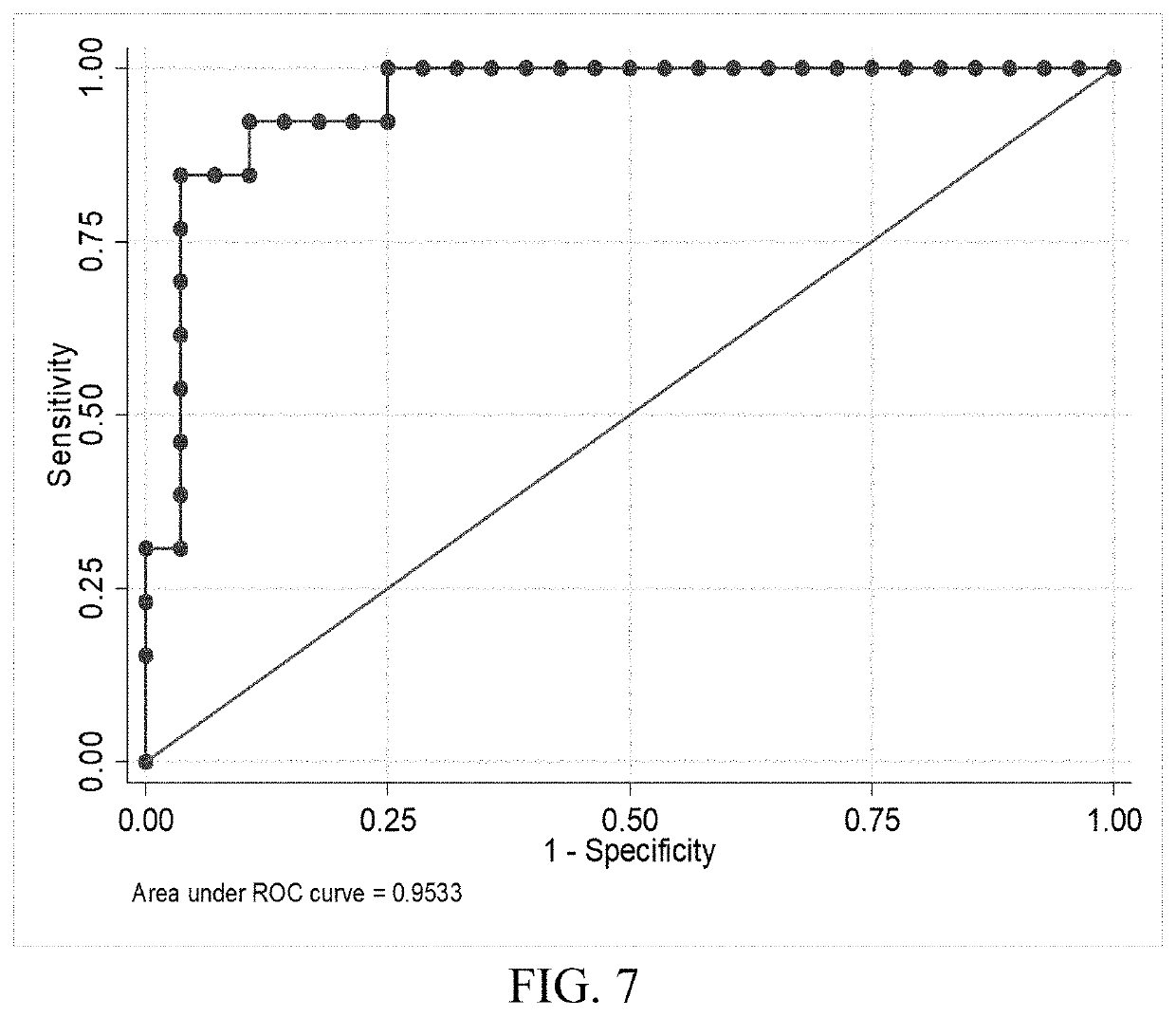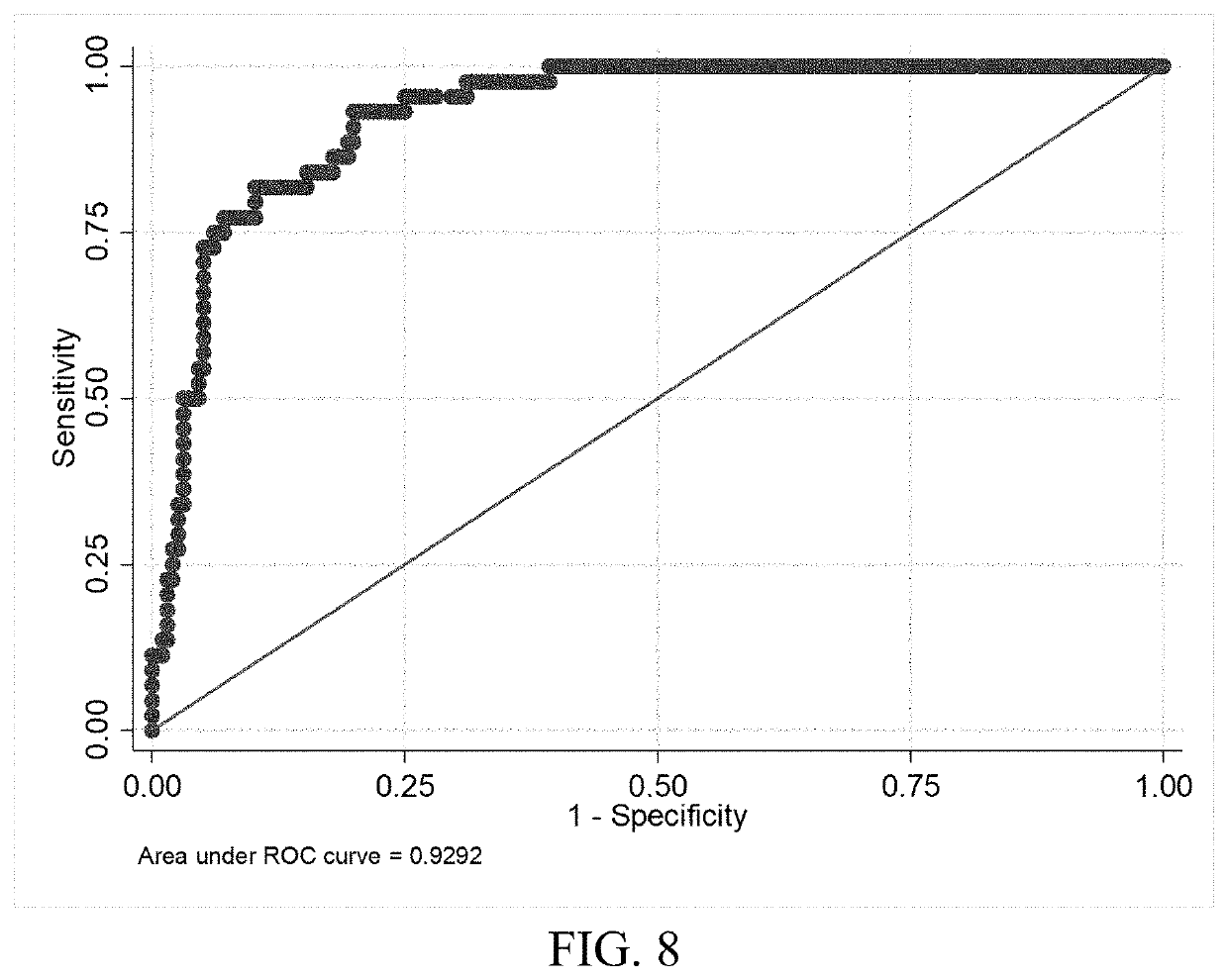Multi-protein biomarker assay for brain injury detection and outcome
a brain injury and multi-protein technology, applied in the field of brain injuries, can solve the problems of high false negative rate and too expensive to identify all patients with cns, and achieve the effects of reducing health care costs and radiation exposure, and reducing head ct scan utilization
- Summary
- Abstract
- Description
- Claims
- Application Information
AI Technical Summary
Benefits of technology
Problems solved by technology
Method used
Image
Examples
example 1
otein Biomarker Panels for Acute Traumatic Brain Injury (TBI) at Time of Presentation
[0139]Combinations of protein biomarkers and their variants (including protein splice variants (isoforms), polymorphisms, and degraded and other post-translational modifications including, but not limited to, citrullination, phosphorylation, acetylation, methylation, etc.) used as a screening test prior to obtaining a head computerized tomography (CT) scan for diagnosing acute intracranial pathology will allow a safe decrease in avoidable head CT scans.
Materials and Methods
[0140]Study Design:
[0141]Case Control.
[0142]Study Population. TBI Cases:
[0143]Cases were consecutive adult patients (18 years or older) presenting to the Johns Hopkins Hospital Emergency Department (ED) with blunt trauma to the head that occurred within 24 hours of arrival, who had a head CT scan that demonstrated acute traumatic intracranial hemorrhage, and who additionally, had excess serum specimen available in the clinical che...
example 2
ived Neurotrophic Factor (BDNF) and its Variants at Time of Presentation Differentiates Between Patient with and without Traumatic Brain Injury (TBI)
[0163]Brain Derived Neurotrophic Factor (BDNF) and its variants (including its splice variants (isoforms), polymorphisms, pro-hormone, active form, pro-hormone inactive cleavage fragment and degraded and other post-translational modifications including, but not limited to, citrullination, phosphorylation, acetylation, methylation and etc., as well as BDNF receptors) at time of presentation differentiates between patient with and without traumatic brain injury (TBI). Furthermore, BDNF, its variants or receptors may be used therapeutically in the treatment of TBI.
Materials and Methods
[0164]Study Design.
[0165]Case control study.
[0166]Study Population. TBI Cases:
[0167]Adult patients (18 years or older) presenting to the Johns Hopkins Hospital Emergency Department (ED) with blunt trauma to the head that occurred within 24 hours of arrival, w...
example 3
on of Serum Glial Fibrillary Acidic Protein (GFAP) and Brain Derived Neurotrophic Factor (BDNF) Concentrations Obtained at Presentation Yields Improved Prediction of Short and Long-Term Post-Concussive Symptoms and Disability
Materials and Methods
[0176]Study Design.
[0177]Prospective cohort study.
[0178]Study Population: TBI Cases:
[0179]Cases were consecutive adult patients (18 years or older) presenting to the Johns Hopkins Hospital Emergency Department (ED) with blunt trauma to the head that occurred within 24 hours of arrival, who had a head computerized tomography CT scan that demonstrated acute traumatic intracranial hemorrhage, and who additionally, had excess serum specimen available in the clinical chemistry laboratory. Patients were excluded if they had a prior surgical procedure on the brain or a brain tumor.
[0180]Tbi Controls:
[0181]TBI Controls were consecutive adult patients (18 years or older) who presented to the ED within 5 days of cases, for blunt head trauma significan...
PUM
 Login to View More
Login to View More Abstract
Description
Claims
Application Information
 Login to View More
Login to View More - R&D
- Intellectual Property
- Life Sciences
- Materials
- Tech Scout
- Unparalleled Data Quality
- Higher Quality Content
- 60% Fewer Hallucinations
Browse by: Latest US Patents, China's latest patents, Technical Efficacy Thesaurus, Application Domain, Technology Topic, Popular Technical Reports.
© 2025 PatSnap. All rights reserved.Legal|Privacy policy|Modern Slavery Act Transparency Statement|Sitemap|About US| Contact US: help@patsnap.com



